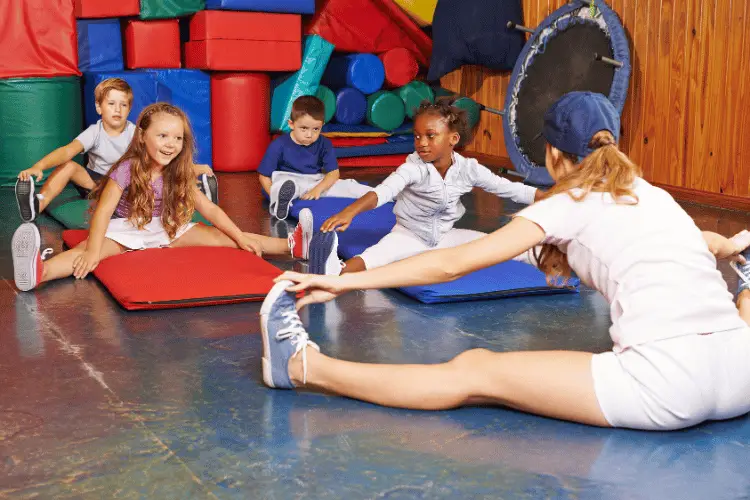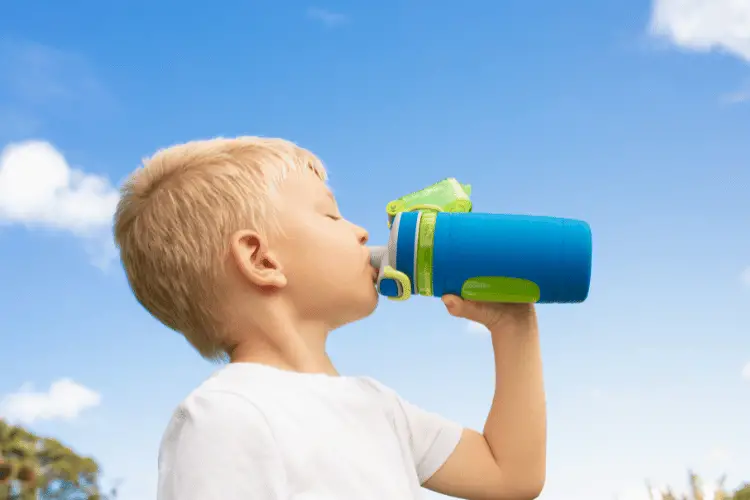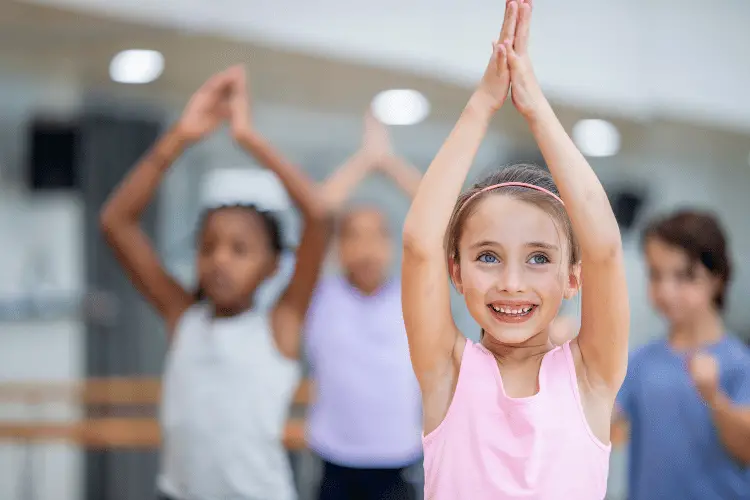Physical exercise is essential for the health of our bodies and minds, and while there are many studies and reports to back these claims up, most of them were conducted on adults and grown-ups only.
But what about children? Does playing outside count as enough of a workout or should children also do exercise to stay healthy?
In today’s article, we’ll walk you through a variety of facts about children’s exercise, including their long-term benefits, how often to do them, and whether different types of exercise have any negative impacts on their health growing up. So without further ado, let’s dive in!
Is It Okay for a Kid to Workout?
One of the questions that many parents ask regarding their children’s health is whether it’s okay for them to work out or go to the gym.
As a general rule, working out is essential for all of us, including kids, as long as it’s done right.
After all, children are relatively more energetic and agile than adults, so they’re capable of withstanding the physical demands of exercise. They actually have amazing capacities to repair their bodies as opposed to adults.
Why Do Children Have So Much Energy?
Kids are naturally energetic and eager to run around and stay active all day long. This happens because children have a much higher metabolic rate than adults.
According to a report by Science Magazine, children’s metabolic rates peak at around the age of 5 and slowly decrease until they hit a plateau at around the age of 20.
A higher metabolic rate means that, even while sitting still, children burn more energy than the average adult sitting still.
However, what’s really intriguing about children’s activity is how long they can stay in such a state without fatigue. This happens because of children’s impressive recovery rate.
Children’s bodies are capable of recovering after intense activity much quicker than adults and older people, which allows them to maintain their high activity for a very long time and show up ready for more the next day.
Combined with children’s vast imagination and instinct to explore and stay curious, it’s no wonder why children are bundles of energy!
Advantages of Exercising at a Young Age
Here’s a quick look at some of the scientifically proven benefits of children’s workouts:
- Enhances fitness and helps in burning more calories (source)
- Improves your children’s self-esteem and mental well-being (source)
- Boosts their muscles and helps them grow stronger (source)
- Fortifies their immune system and protects them from diseases (source)
- Helps children strengthen their body’s balance and coordination (source)
Does Playing Outside Qualify As Workouts for Kids?
Outdoor play, especially during the summer, is one of the most popular activities among children.
As long as they’re under adult supervision, playing outside can be a great way for children to explore the world, meet new friends, and burn some calories in a safe environment. But is playing outside enough of a workout for a child?
Technically speaking, playing outside can be an excellent form of exercise. However, whether it’s a sufficient workout highly depends on various factors, such as:
- Level of activity required
- Time spent playing
- Child’s age and overall weight
- Intent of workout
For instance, an average child shifting between walking and running while playing can burn anywhere between 198 to 654 calories per hour.
On the other hand, the same child would burn around 174 calories per hour riding a bike and up to 384 calories roller-skating.
If the main intent of the activity is to burn calories and lose weight, these activities would qualify as excellent workouts. (provided that it’s accompanied by a healthy balanced diet, of course)

Additional Benefits of Playing Outside
Playing outside can have a variety of health benefits for children besides burning calories, including but not limited to
- Providing children with vitamin D through sun exposure, which helps in building their bones and developing a healthy immune system.
- Allowing them to engage with others, which encourages children to socialize and make friends.
- Bonding with parents
- Teaching children to multitask and improving their agility and motor coordination
- Interacting with nature, which helps in developing a healthier mind, according to a 2018 systemic review.
At What Age Should a Child Start Working Out?
Although children’s bodies are optimized for energy expenditure and high physicality, they are not typically ready for any formal exercise at a very young age.
This is because children are somewhat limited when it comes to fully controlling their balance within their first few years.
According to the Department of Health’s guidelines, the answer here varies depending on the requirements of the workout in question.
For example, a child can start engaging in active play from as young as 4 years old, as active play doesn’t involve advanced techniques or moves.
In general, workouts require more than just an energetic body. They also require following and committing to workout instructions as well as maintaining proper form, balance, and technique while training.
That’s why these forms of workout are typically reserved for older children (around 6 to 8 years old).
The Nature of the Exercise Can Affect the Starting Age
Another factor that plays a significant role in determining the suitable age for workouts is the nature of the exercise itself.
For example, a child as young as 4 to 6 years old can engage in simple activities like running, jogging, swimming, and bicycling, but other fitness exercises may not be ideal for them.
On the other hand, children aged 6 to 8 years can start doing simple fitness, strength, and endurance exercises.
As for exercises that involve weight lifting and bulking up, you should typically wait until your child hits adolescence so that it doesn’t impact their bone growth.
It’s also highly recommended that you check with your child’s doctor to make sure that your kid is fit and healthy enough to engage in more demanding exercises.
How Often Should a Child Exercise?
According to the CDC, the exact age of a child has a direct impact on the amount of exercise they need.
For instance, a child between the age of 3 and 5 needs to engage in active play almost all day long.
This is necessary for healthy growth because it helps them strengthen their muscles and improve their ability to maintain their balance.
On the other hand, a child aged 6 or older needs to be physically active for around 60 minutes. However, it is usually better to spread these 60 minutes throughout the day rather than having it as a single 1-hour session.
The vast majority of these 60 minutes should be focused on aerobic activities and cardio workouts, such as walking, running, swimming, bicycling, etc.
The same report also recommends that children must have muscle and bone-strengthening exercises at least 3 times a week. This includes workouts like push-ups, sit-ups, climbing, etc.
Is It Bad for a Kid to Workout?
As previously established, workouts are great for children and come with plenty of advantages to their body and mind, so the typical answer to this question is no. However, there are a few instances when workouts could be bad for a child.
Children Need to Be Cleared Medically Before Workouts
For example, before engaging in any workout, you have to make sure that your kid is healthy enough to do it, which is why checking with your kid’s doctor is always necessary.
In some cases, children may suffer from cardiovascular problems and other illnesses that could impact their ability to do high-intensity exercises.
In that case, rigorous workouts could pose a serious threat to their health. However, this doesn’t mean that these children shouldn’t exercise at all.
Instead, they need to follow the doctor’s advice to avoid negative complications, as studies found that some forms of exercise could still be good for kids with congenital heart problems
Workouts Need to Be Age Appropriate
Another aspect that could deem healthy exercise problematic for a child is age suitability. For example, if your child is too young to maintain proper form while doing some exercises, they could put themselves at risk of getting serious injuries.
This is because younger children and teenagers are more vulnerable to injuries than adults due to the incomplete growth of muscles and bones.
This means that injuries may take longer to heal and may even leave long-lasting or irreversible complications, which is proved by many studies and reports.
Additionally, muscle-heavy exercises like bulking and weightlifting could be problematic before adolescence.
This is because the extra muscles put a lot of pressure on the children’s bones, which can cause growth issues.
Are Children’s Exercise Programs Worth it?
Children’s exercise programs, such as after-school, before-school, or weekend exercise programs, can be an excellent method to encourage your child to work out and lose weight.
In fact, one study showed that kids aged 6 to 13 managed to increase their physical activity levels and improve their bone health considerably by joining carefully planned children’s exercise programs.
That being said, you may still need to consult your family doctor or a pediatrician before joining specialized children’s exercise programs.
Do Kids Need Electrolytes Drinks and Juices After Workouts?

As we exercise, our bodies start losing essential minerals and hydration through sweat. This happens to both adults and kids, although at different rates.
Electrolyte drinks are water laced with extra minerals, which is designed for top athletes that do extremely rigorous activities and deplete their electrolyte reserves.
The ingredients of these electrolyte drinks may vary from one product to another. However, in most cases, they’re not necessary for children.
This also goes for energy drinks. These beverages contain high amounts of sugar and may also have caffeine in their ingredients, which can cause irritability and mood problems in children.
However, children are still prone to dehydration after workouts or active playing, especially during hot summer months.
For that reason, it’s recommended that children drink around 4 to 8 cups of water throughout the day, depending on their age, body size, environment (hot or cold) and activity level.
Do Kids Need Workout Supplements?
Pre and post-workout supplements are common among athletes because of various reports that they can improve performance while exercising.
While many supplements are backed by plenty of evidence for their effectiveness, there’s not enough data to establish their safety for children.
For that reason, most pediatricians advise against using them because children are already energetic enough and rarely engage in ultra-rigorous and competitive activities that require supplementation.
Kid-Friendly Indoor Exercises
While playing outside comes with plenty of advantages to children, keeping an eye on your child while playing outside is not always convenient.
Luckily, there are plenty of indoor exercises that can greatly improve the health of your children while being simple and fun. Here’s a quick look at some of them.
Push-ups
Push-ups are excellent exercises to increase upper body strength and improve endurance and agility. It also doesn’t require any special equipment.
However, make sure that your kid is at least 6 years old for this one because it’s a relatively intense bodyweight workout.
Jumping Jacks
According to many studies, jumping jacks are among the most reliable workouts when it comes to balance and coordination for kids. They’re also a good medium-intensity cardio workout, so it’s good for losing extra weight.
Burpees
Burpees is a complete body workout that also doubles as great cardio for your children. Besides burning a lot of calories, burpees also strengthen core and lower-body muscles.
Sit-ups
If you want to strengthen your kids’ abdominal and core muscles while strengthening their heel contact, you should incorporate sit-ups into their daily exercise routine. Keep in mind that sit-ups and crunches are only recommended for children above the age of 6.
Dancing/Zumba
Dancing and indoor Zumba sessions are a great way to keep your children in a good mood while also working out their bodies and burning a lot of calories.
Crab Walking
Crack walking is an exercise when children lay on their backs, then place their hands and feet on the ground (behind their torso) to walk around the room.
This simple and fun exercise can greatly improve your children’s hand-leg coordination and strengthen their core muscles, according to studies.
Squats
If you want to strengthen your child’s body without putting too much strain on their muscles, squats can be a perfect choice!
This one strengthens your child’s quadriceps, hamstrings, and glutes, which can massively improve their athletic performance as they grow up.
Affiliate Disclosure: We may earn a commission if you click a link on our site and make a purchase. For more info, see our disclaimer.
Kids’ Exercise Equipment

One of the best things about kids’ workouts is that they don’t need any special equipment or tools to work out.
However, using these items could dramatically improve your child’s commitment to exercise and enhance their workout gains.
Here are some of the best kids’ exercise equipment to consider for your children’s workouts:
Obstacle Courses
An obstacle course is an excellent indoor exercise for kids because it encourages kids to be more physical while adding an element of mental stimulation to the workout.
You can create homemade obstacle courses with furniture or opt for ready-made obstacle course kits.
Gymnastics Bars
Teaching gymnastics from an early age helps in improving postural control and balance in children.
Luckily, foldable gymnastics bars are ideal for getting their little bodies moving while being easy to store.
Scooters and Bikes
Cycling is one of the most enjoyable exercises for children because it combines exploration and staying active.
This activity is suitable for kids as little as 3 years old, as long as they’re supervised by an adult. Kids could also use an under-desk pedal to stay active while studying or kid-friendly exercise bikes.
Stepping Stones
If you want your kids to improve their motor skills while developing a better sense of balance and coordination, you should consider stepping stones.
The best thing about this exercise equipment is that kids can use them both indoors and outdoors, and the kit is easy to store between sessions.
Trampolines and Inflatable Houses
Jumping on trampolines is a highly energetic and relatively safe activity all the while being tons of fun for children of all ages.
Jumping strengthens lower body muscles and doubles as an excellent cardio for weight loss. The only drawback here is that it takes up a lot of space in your backyard.
Balance Boards and Pods
Balance boards are great at improving kids’ coordination while providing a decent lower-body workout. They’re also easy to store between sessions and can be used almost anywhere!
Besides boards, your children could also use a balance pod, which is a great workout for calves and helps in improving endurance while hiking and running.
Surfing Swings
Although regular swings are fun, they are not exactly a workout, and that’s where surfing swings stand out!
These swings are designed so that your children stand on the board and hold onto handlebars to generate motion.
Besides being more fun than a regular board, it’s also a great workout for core muscles and helps them improve their balance and coordination.
Does Exercise Music Work for Kids?
According to many studies, the tempo of music can have a noticeable impact on our performance, and children’s workouts are no exception to that rule.
Music can also influence your children’s mood and encourage them to be more energetic while working out.
Although it highly comes down to personal preferences (even for children), there are plenty of carefully picked workout playlists for children on Spotify for your kids to enjoy while training.
Are Kids’ Exercises on YouTube Effective?
If your child is good at following instructions, youtube workout videos could be a great way to exercise.
There are tons of youtube channels that specialize in kids’ workouts. I’ve given a few examples below:
Wrap Up
As you can see, kids’ workouts are extremely beneficial for their growth and even promote their psychological well-being.
There are tons of great workouts that you can incorporate into your kid’s daily routine. However, you should always supervise your child’s training (or have a professional trainer do it) to make sure that they’re safe and using the right technique and form while training.
References
- https://www.ncbi.nlm.nih.gov/pmc/articles/PMC1402378/
- https://www.science.org/content/article/little-kids-burn-so-much-energy-they-re-different-species-study-finds
- https://www.verywellhealth.com/exercise-and-fitness-for-kids-2633541
- https://www.health.harvard.edu/blog/6-reasons-children-need-to-play-outside-2018052213880
- https://www.cdc.gov/nutrition/infantandtoddlernutrition/vitamins-minerals/vitamin-d.html
- https://www.sciencedirect.com/topics/medicine-and-dentistry/motor-coordination
- https://www.ncbi.nlm.nih.gov/pmc/articles/PMC6161651/
- https://health.gov/sites/default/files/2019-09/Physical_Activity_Guidelines_2nd_edition.pdf
- https://www.ncbi.nlm.nih.gov/pmc/articles/PMC4436964/
- https://pubmed.ncbi.nlm.nih.gov/14974029/
- https://www.ncbi.nlm.nih.gov/pmc/articles/PMC3445252/
- https://pubmed.ncbi.nlm.nih.gov/25892449/
- https://www.ncbi.nlm.nih.gov/pmc/articles/PMC8697465/
- https://www.cdc.gov/physicalactivity/basics/children/index.htm
- https://www.hsph.harvard.edu/obesity-prevention-source/physical-activity-and-sleep/
- https://www.ncbi.nlm.nih.gov/pmc/articles/PMC2690546/
- https://www.heart.org/en/health-topics/congenital-heart-defects/care-and-treatment-for-congenital-heart-defects/congenital-heart-defects-and-physical-activity
- https://www.bouldercentre.com/news/risk-injury-young-athletes
- https://abcnews.go.com/Health/Healthday/story?id=4508484&page=1
- https://www.nytimes.com/2018/02/14/well/move/a-before-school-exercise-program-may-help-children-thrive.html
- https://www.betterhealth.vic.gov.au/health/healthyliving/Exercise-the-low-down-on-water-and-drinks
- https://www.aacap.org/AACAP/Families_and_Youth/Facts_for_Families/FFF-Guide/Caffeine_and_Children-131.aspx
- https://www.healthychildren.org/English/healthy-living/nutrition/Pages/Choose-Water-for-Healthy-Hydration.aspx
- https://ods.od.nih.gov/factsheets/ExerciseAndAthleticPerformance-Consumer/
- https://pubmed.ncbi.nlm.nih.gov/35400227/
- https://www.ncbi.nlm.nih.gov/pmc/articles/PMC7759499/
- https://pubmed.ncbi.nlm.nih.gov/2750858/
- https://www.ncbi.nlm.nih.gov/pmc/articles/PMC9234256/
- https://pubmed.ncbi.nlm.nih.gov/33197661/
- https://www.ncbi.nlm.nih.gov/pmc/articles/PMC7919351/
- https://pubmed.ncbi.nlm.nih.gov/22505128/
- https://bmcpublichealth.biomedcentral.com/articles/10.1186/1471-2458-6-147
- https://www.ncbi.nlm.nih.gov/pmc/articles/PMC5005874/
- https://www.ncbi.nlm.nih.gov/pmc/articles/PMC5435671/
- https://www.ncbi.nlm.nih.gov/pmc/articles/PMC8167645/



